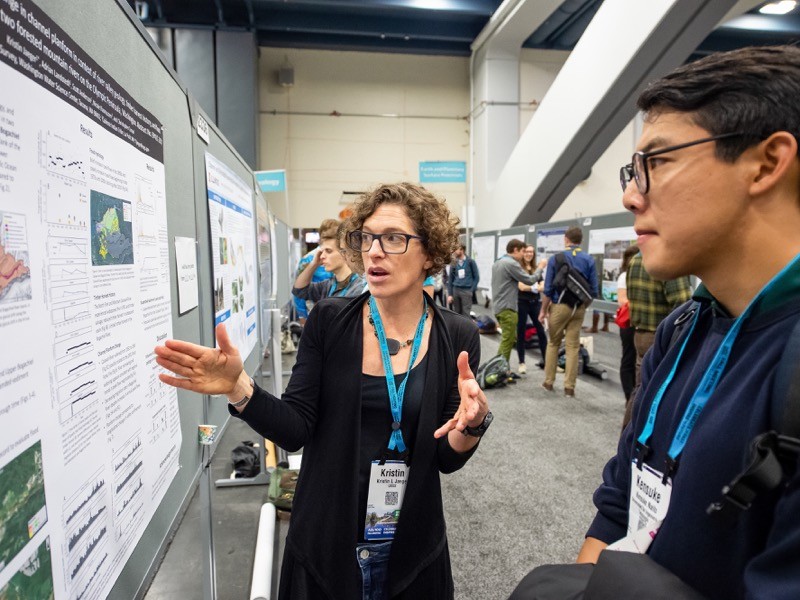Higher Education
Universities have an important role to play in the global race to net zero emissions by balancing their own emissions and by researching global solutions, models and pathways to net zero.
Progress towards net zero education
- Since 2019, over 500 higher education institutions representing 4.6 million students, and 60 networks representing more than 17,000 colleges and universities, have committed to be Net-Zero by 2050 at the latest, through either the Global Universities and Colleges for the Climate Letter or The Presidents’ Climate Leadership Commitments. More announcements are expected announcements in 2020 and 2021 ahead of COP 26.
- Universities can join these institutions and sign the global climate letter here.
“[We] believe firmly in the power, potential, and imperative of higher education’s key role in shaping a sustainable society.” – The Presidents’ Climate Leadership Commitments
case studies
University of Tasmania
In 2016, the University of Tasmania became the second university in Australia to be awarded a carbon neutral certification. Their process…
UNIVERSITY OF BRITISH COLUMBIA
The University of British Columbia received a #1 ranking by Times Higher Education for their climate action plan, which sets a target of 67% emissions reduction by…
AMERICAN UNIVERSITY
In 2018, American University became the first higher education institution to achieve a carbon neutral certification in the US. By…

‘In-person poster presentations at scientific meetings could be replaced by digital posters and online discussions’. Credit: Nature, AGU
Key Challenges
As global centres of exchange, universities also face some challenges in their individual and collective progress towards net zero:
- Academic and student travel, in particular flights, are a major and more challenging source of emissions for the sector to reduce.
- Public transport schemes, digital and regional conferencing, remote work, and investment in clean travel innovation will help to reduce travel emissions.
- Even with these measures, most universities expect to create some ongoing travel emissions given the integral role of international exchange for the sector.
- These carbon emissions, which serve as long term pollutants, require universities to develop credible offsetting strategies given the low probability of clean air travel by 2050.
Net Zero Solutions For Education
Transition to 100% clean power
Universities are often major energy users, powering dormitories, classrooms, dining halls, and research labs. Investing in efficiency measures and transitioning towards cleaner forms of energy, such as solar and wind power, has a host of benefits for universities, often with a high return on investment. As renewable energy costs continue to drop, universities can save money by switching to clean energy and reduce risk by moving away from volatile fossil fuel sources. More so, many universities are conducive to implementing clean energy systems, as often institutions own their own real estate and can build solar panels and develop other clean energy projects on-site (100% Renewable).
Engage with suppliers and partners
As hubs of economic activity a significant portion of emissions associated with universities is found in the supply of goods and services. As major contractors with suppliers and partners universities may have the leverage and responsibility to engage with suppliers on their own net zero and emissions reductions targets, or drive a sustainable market by writing and advertising a policy to contract with only net zero suppliers. On popular demand from students many universities are sourcing sustainable dining options and offering menus in line with the EAT Lancet Report for dining within planetary boundaries, which demonstrates the need for a shift to a mainly plant based diet. High-impact partners including investment firms, potential donors and companies seeking to hire talent out of universities also offer ethical engagement opportunities for universities. The divestment movement has opened up the conversation on ethical partnerships in university finance. In a new trend, the University of Oxford and MIT have both recently surveyed the employers who advertise career opportunities to their students asking after the organizations’ climate commitments and net zero targets.
Reduce transport emissions
In a 2019 estimate for UK academic staff, 1.1 million tonnes of CO2 emissions were associated with academic air travel — a number that is likely below real emissions given underreporting of university travel data. Adding emissions generated from international students, if each international student in the UK took just one round-trip, international flight each year, another 1.8 million tonnes of CO2 per year would be emitted in relation to higher education (Buchs 2019). This requires universities to re-evaluate the role of international air travel in the lives of staff and students.
One way to reduce air travel emissions associated with higher education is to reduce incentives for academic flying. However, fewer flights to conferences doesn’t need to mean fewer opportunities to connect with colleagues and share knowledge globally. Conferences held, regionally rather than globally to reduce travel duration, and online, reduce and eliminate the need for academics to travel long distances, and make these events more accessible by reducing the burden of travel.
Universities can also continue to support remote working options. While the challenges of online education have become evident during the COVID-19 pandemic, implementing greater opportunities for academic staff to work from home offers a pathway for universities to reduce their emissions from commuters.
Lead on credible offsetting for unavoidable flight emissions
While reducing the number of flights taken in relation to higher education is a necessary step to reaching net zero, academic air travel is unlikely to be eliminated altogether (particularly with regards to international students and critical in-person research). The aviation sector is a hard-to-abate sector, meaning non-GHG emitting alternatives are not readily available or easily scalable to meet demand. After reducing the amount and duration of flights taken by academics, universities will also likely need to offset any remaining emissions from essential air travel and may be well placed, due to their accountable scientific communities, to lead the charge on establishing credible, net zero aligned offsetting measures. This means driving and scaling the transition from carbon reduction offsets to carbon removal offsets and investing in research and development for long-term storage. Currently, such options are expensive and not available at scale so universities can play a key role in driving this new technology, on which their international business models may rely under a net zero world.
Invest in solutions research and living laboratories
In addition to addressing their operational emissions, universities can leverage their own intellectual capital to scale research on net zero solutions. Prioritizing and funding projects on emission-reduction tools and greenhouse gas removal, educating individuals and businesses about the need for net zero initiatives, and setting examples for how net zero can be achieved in the education sector are all significant tools universities can use to further the global goal of reaching net zero sooner than later.
At the intersection of sustainable research and operations, Universities are increasingly taking the approach of treating their own communities as ‘living laboratories’ for testing interventions. For example, a living laboratory at the University of Oxford is finding ways to operationalise the Conservation Hierarchy principle. A living lab at Ohio state is testing rotor designs on wind turbines, and a living lab in Tempe Arizona is deploying carbon-capture processes.
Why Net Zero Education?
In addition to reducing their own emissions, universities also have the opportunity to influence and drive wider net zero progress across other sectors:
- University research on net zero is crucial for informing and developing policy
- University faculty fill advisory roles, sharing their their expertise
- Networks of university alumni can spread the university’s thought leadership around the world
- University graduates find work in influential positions, so educating students on net zero while at university presents an opportunity to influence high-level decision making long into the future.
- Universities often have prominent public profiles — by acting progressively they can inspire others to act.

Image of the Bridge of Sighs at Hertford College, Oxford.